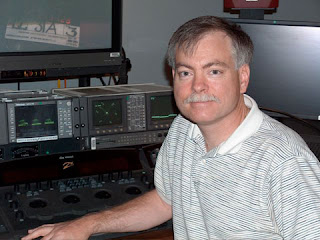
I pitched to Mike 12 classes of Digital Colour Theory. At that time I had been teaching color theory courses at a number of area colleges and thought this class might apply to what he was talking about. So, I sent him an e-mail and told him that I had color theory pertaining to digital media and would he be interested in doing something with it. Turned out to be Mike from FXGuide and FXPHD and with support from John Montgomery, I developed the classes that were placed on the Internet. To my surprise they were widely popular.
The e-mails I got back in the FXPHD forum numbered in the 100’s along with tons of questions. It was so amazing and gratifying to have the classes out in the world wide forum and hear questions coming back from Russia, Spain, Israel, United States and Canada, it was just an amazing experience.
Once the classes were finished John Montgomery contacted me about doing a color correction class with a software called “Final Touch” which was developed by Silicon Color. This year Apple purchased the Silicon assets and re-branded it as Color, part of the Final Cut Pro Studio 2. Once the dust had settled on the acquisition, John asked me about teaching Color. The DCT classes were such a positive experience I said yes! I drafted 10 classes together on Color, workflow and some looks at the entry level. I checked out a lot of the forums on the Apple website as well as Creative Cow and certainly there was a groundswell of people wanting to know about this software so there was a big base of people interested in it. So the first class was completed and put on the Internet for download in the middle of September. In it I discussed calibrating your monitor. It’s extremely important that while Artists are creating their images they use a properly aligned monitor (canvas) so there are no surprises when your peers are judging your work. Previously in the Digital Color Theory class I talked about calibrating a CRT monitor and this time around I thought I would take it up to the next level. Compositors, Digital Intermediate Artists and Editors were doing color correction based on computer monitors, mostly flat panels. So I contacted Jeremy Pollard at Rising Sun Research and asked him to give me the ins and outs of how this software functions.
I felt it was good that we went over alignment of the flat panels. Rising Sun Research has 2 pieces of software that first profile the monitor, CineProfiler and then apply a look-up table (LUT), equalEyes. I’m up to class 3 now and just received a note from John Montgomery that they will be capturing footage with their Red camera for an upcoming colour corrections class so I’m looking forward to working with log images from the camera.
